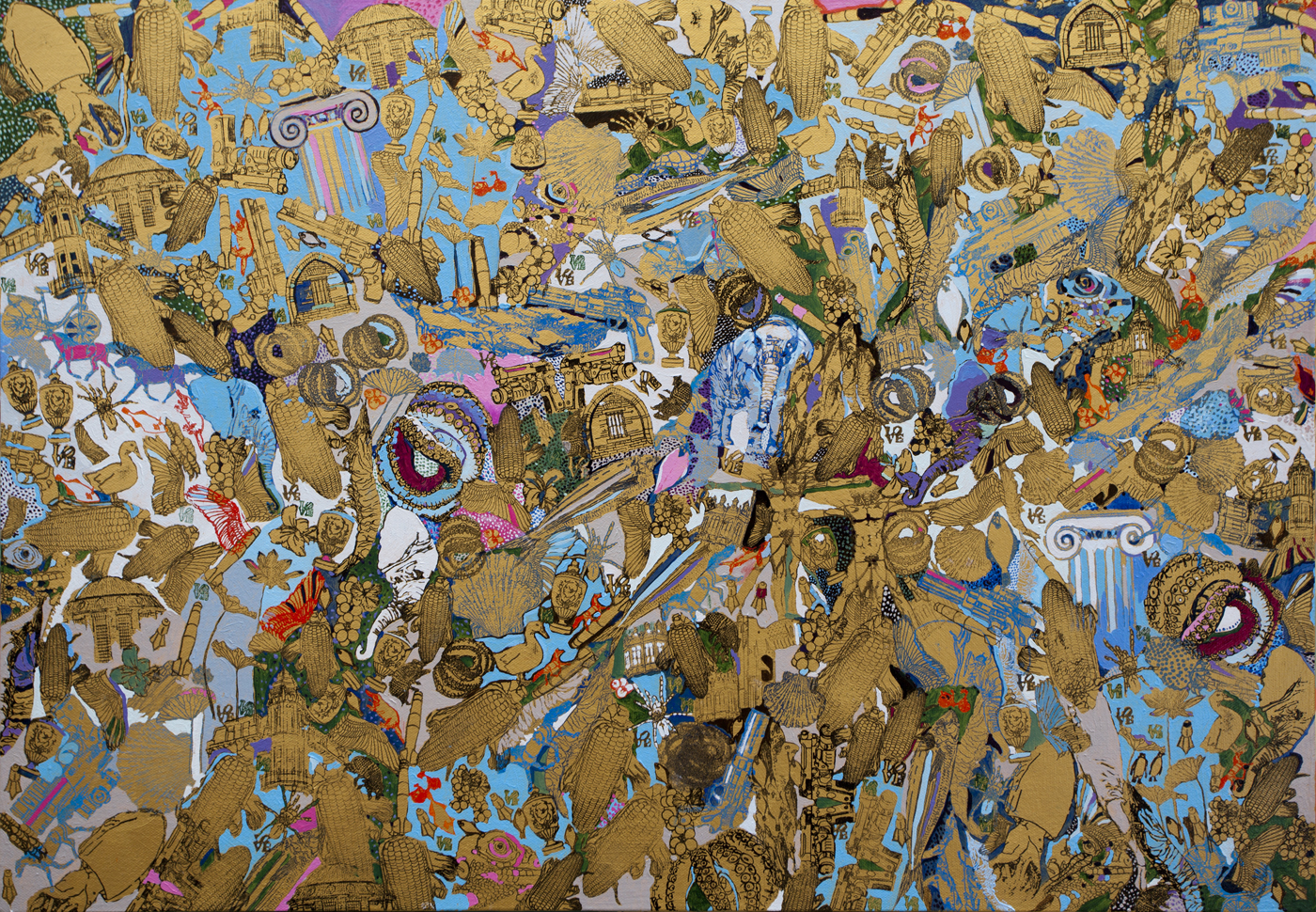

The new dialectic of chaos and order
The artist Jang Woosuk pursues the image characteristics of post-history. History begins with the invention of written script. Script enabled Time to be recorded. Script embodies a characteristic that is process-based. Therefore, script is chronological and linear. The period before the invention of written script is called pre-history. This period represents the way the world was perceived before it became possible for humanity to explain it logically through the language of the written text. Everything was of magic and myth. People from this era perceived the world through images, thus every moment around them was current, live and existing for itself. They understood the world on its surface level. The two-dimensionality of an image is congruent to the way these people understood the world as it appeared to their eyes.
With the invention of photography, people began to experience a world that is neither of image or of text. Photography is the projected image of the world. It is not a copy of an existing object. With a click of a shutter the light is captured and projected onto film through light-sensitive chemicals. When developed, an image is produced. This image is rather a mosaic than a fragment of surface. The image is a result of compromise between the technique of logical mind and the image belonging to the magical world. These produced images may be arranged chronologically and sequentially. The collection of these images become a moving film. The term “post- history” is given to an era free from the necessity of history, a culture where events and narratives are artificially manufactured.
The images of post-history, unlike a painting, do not rely on the importance of surface and may exist independent of context. They are either accidentally captured or massively consumed images.
Here begins the artist’;s question on what value the contemporary painting possesses. Has it become a special consumer goods of selected few elites who possess these images? Painting alone can no longer provide the energy that the world needs as grounds for new artistic creations. What this world needs is an image that is popular and ordinary but have dominated the current culture, not some metaphysical and unconscious, abstractly painted images consumed by the elites. Jang contemplates on a way contemporary images may harmonize with the basic nature of oil painting.
Jang invents a technique which can be called “stampainting”. He creates highly stereotypical images pertaining closely to the current world in large quantities. A cute puppy, a handgun which may symbolize a certain sexual fantasy, an octopus which symbolize conglomerate chaebol, and other images that remind one of the power of capital, and turns them into stamped images. The way he arranges these images is different from any technique found in the arts of the Renaissance or the Baroque, nor reminiscent of the surface of Impressionism or Pop-art. The images are completely jumbled as if placed in a centrifugal separator or a salad bowl. There co-exist chaos and order. This is called “chaosmos”.
In the contemporary world, there still exists the constant battle to extricate oneself from the old notion of West-oriented, male-chauvinistic, Eurocentric narratives. To add to this effort, Jang combines the oriental tradition of stamp engraving and Western tradition of brush painting. Artificial objects and natural elements are mixed together and barriers among countries are dismantled. The importance of a center-less, all-over surface as can be created in form of a collage is elevated, with its emphasis on the beauty of “equalitarianism” in resulting image. There is not one central theme. Jang’;s art is a collage of the East and the West, chaos and order that have fought for superiority but have decided to peacefully co-exist. The supremacy of oil painting has disappeared. There is no division between the East and the West. His work embodies the direction and value that the humanity of 21st century must strive to pursue.
Lee Jinmyung
Kansong Cultural Foundation Curator
